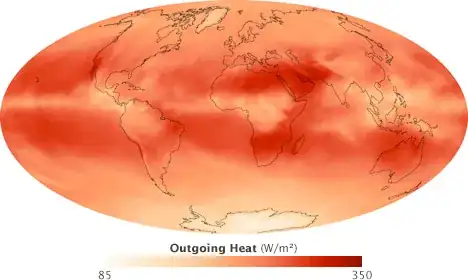Though they aren't quite as high resolution as might be ideal, the meteoblue website appears to give reasonable meteograms for stations around the globe showing the energy components...

(Sample energy balance forecast, copyright meteoblue)
On the radiation section (the bottom of the many graphs), you can see:
- The incoming solar radiation (SW down)... energy from the sun that will warm the ground. A daytime-only process.
- The sensible heat... which is the conduction+convection up into atmosphere that you mentioned, and will be a cooling process for the ground... basically in it, the ground directly warms the air just above it (conduction) and that leads to thermals/mixing (convection). Basically a daytime-only process.
- The latent heat... an often overlooked factor that can be shockingly significant in places like Florida (where I'm at). Energy is expended in evaporating water... and that energy is later released into the atmosphere whenever that vapor is finally condensed (or deposited). So it's a process that also removes energy from the surface (cooling it). Basically a daytime-only process (results in less drastic daytime temperature rises in maritime environments than in deserts).
- The upwelling longwave radiation (LW up)... the Earth continually emitting radiation as all bodies do with any temperature... most of it in longer wavelengths than the sun due to the cooler temperature here compared to there (thus the name). This is a continual release of energy 24/7 that only varies a bit as the temperature changes... and is a cooling process.
- The downwelling longwave radiation (LW down)... constituents in the atmosphere absorb energy (most of which is Earth's longwave energy), warm, and then re-emit the energy as their own radiators. A portion of this returns to the Earth. The most predominant re-emitors are greenhouse gases ($H_2O$, $CO_2$, methane, etc) and clouds (small contribution also from aerosols (solid particles in the atmosphere)). This will occur 24/7, though vary somewhat depending on cloud coverage, and is a net warming process to the Earth.
So typically:
During the day we get sunlight bringing in energy, with latent heat (evaporation) and sensible heat (conduction/thermals) also ramping up, dispelling some of the rapid energy gain. Then through the night, we really only have longwave radiation as the factor... a large portion of which is returned to Earth.
In more arid areas, there's less latent heat during the day (so heats up quicker), less LW down at night (due to less water vapor) (so cools down quicker), and so larger fluctuations overall. The opposite is true of maritime regions.
On cloudy days, there's less solar radiation, but more LW down. Daytime warms less, but nighttime cools less. So small fluctuations overall.
Some energy does indeed get conducted (and emitted) downwards into the Earth. But it must be a long-term balanced process (a mix of primarily diurnal and annual oscillations within the first few meters)... otherwise if the underground kept gaining energy overall, it would cause it to continue to warm up. Likewise, a very small amount of energy is actually provided to the surface from conduction (and emission) from energy actually emanating within the Earth (due to radioactive decay). However it's a tiny amount (Wikipedia quotes it as 0.027% of the overall budget).
This graphic and this associated Wikipedia article give a larger depiction of all the avenues of energy exchange going on within Earth's atmosphere and their typical scales. To extend that fully through the surface, you'd just need to add the small components of radiation/conduction into and out of the underground.
Please note that meteoblue's meteograms are
forecast meteograms, not observations. Generally I don't think you'll find much full observational data. This is because pyranometers (to measure incoming solar radiation) aren't standard (though are included in some useful datasets, such as the
Oklahoma Mesonet [scroll to bottom]). And other values require additional measurements and calculation (
here is a great deal more information on how the other fluxes are determined).

